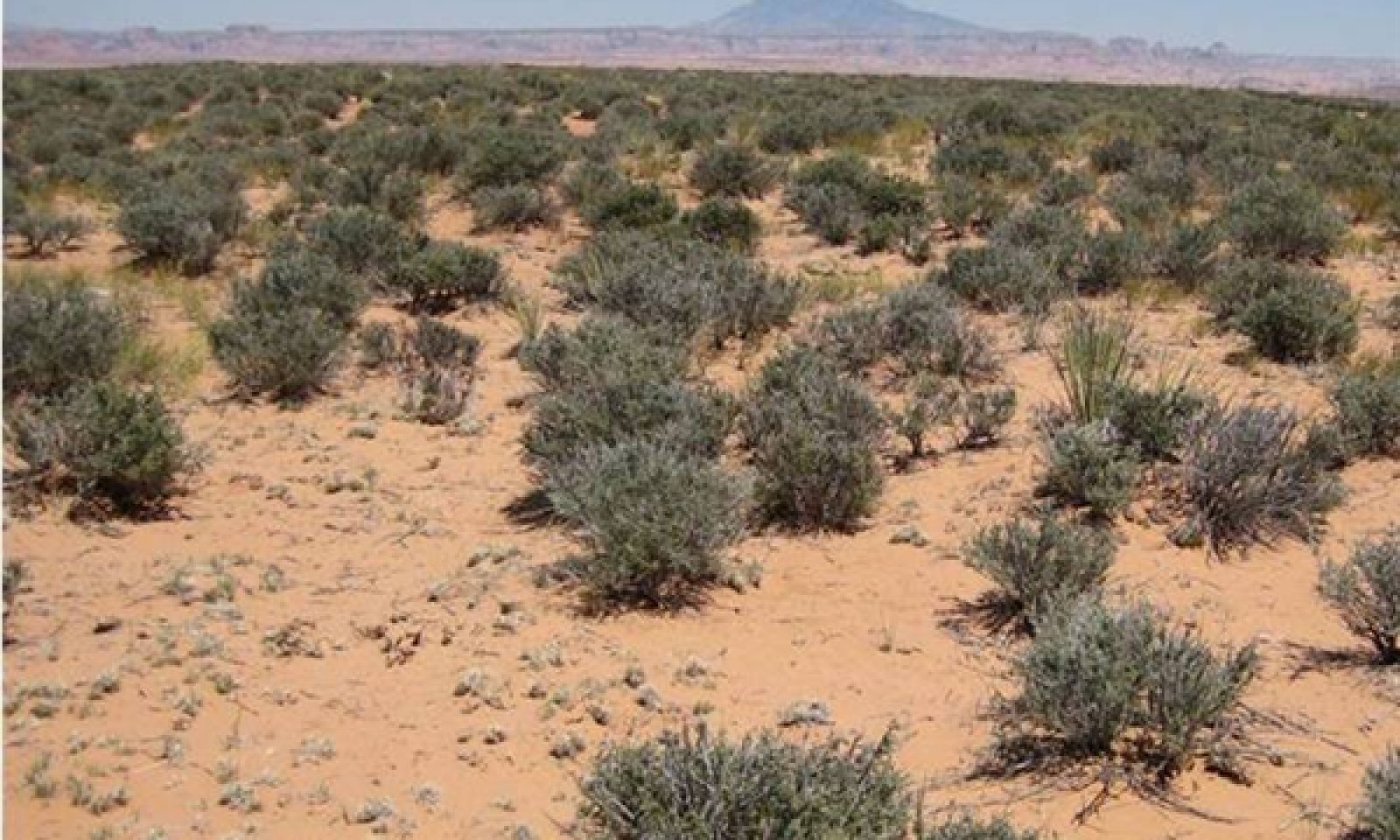
Sandy Upland 10-14" p.z. Warm
Scenario model
Current ecosystem state
Select a state
Management practices/drivers
Select a transition or restoration pathway
- Transition T1A More details
- Restoration pathway R2A More details
-
No transition or restoration pathway between the selected states has been described
Target ecosystem state
Select a state
State 1
Reference State






Description
The dominant aspect of this site is a low shrub canopy of blackbrush, fourwig saltbush and Mormon tea, mixed with perennial cool and warm season grasses and some forbs. Other shrubs include broom snakeweed, Greene rabbitbrush and sand sagebrush. Commonly seen grasses include Indian ricegrass, galleta, blue grama and dropseeds.
Submodel
Description
The dominant aspect of this site is a mix of shrubs canopy and annual forbs and grasses. Common shrubs are Mormon tea, broom snakeweed, Greene rabbitbrush, blackbrush, rubber rabbitbrush. The herbaceous canopy is dominated by annual forb, both native and non-natives.
Submodel
Mechanism
Invasion of exotic annuals, Prolonged Drought, Continuous Heavy Grazing, Loss of Perennial Grass Cover
Model keys
Briefcase
Add ecological sites and Major Land Resource Areas to your briefcase by clicking on the briefcase (![]() ) icon wherever it occurs. Drag and drop items to reorder. Cookies are used to store briefcase items between browsing sessions. Because of this, the number of items that can be added to your briefcase is limited, and briefcase items added on one device and browser cannot be accessed from another device or browser. Users who do not wish to place cookies on their devices should not use the briefcase tool. Briefcase cookies serve no other purpose than described here and are deleted whenever browsing history is cleared.
) icon wherever it occurs. Drag and drop items to reorder. Cookies are used to store briefcase items between browsing sessions. Because of this, the number of items that can be added to your briefcase is limited, and briefcase items added on one device and browser cannot be accessed from another device or browser. Users who do not wish to place cookies on their devices should not use the briefcase tool. Briefcase cookies serve no other purpose than described here and are deleted whenever browsing history is cleared.
Ecological sites
Major Land Resource Areas
The Ecosystem Dynamics Interpretive Tool is an information system framework developed by the USDA-ARS Jornada Experimental Range, USDA Natural Resources Conservation Service, and New Mexico State University.




